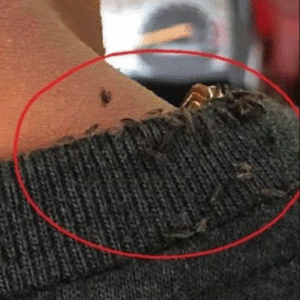Have you noticed small white bumps on your face, especially around the eyes, cheeks, or forehead?
These tiny bumps, known as milia, are accumulations of keratin trapped under the skin.
Although not dangerous, they can be unsightly and cause discomfort to those who suffer from them.
Fortunately, there are natural and effective ways to treat them at home without having to see a dermatologist, as long as they are not inflamed or infected.
What causes milia?

Trapped dead skin cells that form cysts below the surface of your skin cause milia. Your body naturally gets rid of dead skin cells by shedding them to make room for new cells to grow and take their place. When your old skin cells don’t fall off of your body, new skin grows on top of them and traps them underneath. Your dead skin cells harden and turn into cysts.
Additional causes of milia include:
Damage to your skin from an injury or sun exposure.
Long-term use of steroid creams or ointments.
A symptom of a genetic condition.
An autoimmune response.
Where will I have symptoms of milia?

Milia affects the skin on your body. They’re often located on your face. The most common places to find milia on your body include:
How are milia treated?
Milia don’t need treatment because they’re not harmful. If you don’t like how milia look on your skin, talk to your healthcare provider about removing them. Treatment to remove milia could include:
Application of over-the-counter adapalene gel or prescription tretinoin cream.
Surgically removing the milia in your healthcare provider’s office by using a needle to puncture the milia and squeezing out the contents.
Cryotherapy to freeze the milia on your skin to remove them.
Using medicated creams or the antibiotic minocycline to treat milia en plaque.
Can I remove milia at home?

You shouldn’t try to squeeze or scrape off milia on your own, as you might do with a pimple. This can scar your skin or cause an infection. There are things you can do at home that can help:
Wash your face every day with warm water and gentle soap. Then dry your skin very gently. Pat your skin dry.
Don’t use lotions or oils that are meant for adults on a baby. Infant skin is too delicate.
Adults might try an over-the-counter treatment to exfoliate their skin.
Use sunscreen when you go outdoors.




